Creating Online Tutorials
Practical Guides for Librarians
 About the Series
About the Series
This innovative series written and edited for librarians by librarians provides authoritative, practical information and guidance on a wide spectrum of library processes and operations.
Books in the series are focused, describing practical and innovative solutions to a problem facing todays librarian and delivering step-by-step guidance for planning, creating, implementing, managing, and evaluating a wide range of services and programs.
The books are aimed at beginning and intermediate librarians needing basic instruction/guidance in a specific subject and at experienced librarians who need to gain knowledge in a new area or guidance in implementing a new program/service.
 About the Series Editor
About the Series Editor
The Practical Guides for Librarians series was conceived by and is edited by M. Sandra Wood, MLS, MBA, AHIP, FMLA, Librarian Emerita, Penn State University Libraries.
M. Sandra Wood was a librarian at the George T. Harrell Library, the Milton S. Hershey Medical Center, College of Medicine, Pennsylvania State University, Hershey, PA, for over thirty-five years, specializing in reference, educational, and database services. Ms. Wood worked for several years as a development editor for Neal-Schuman Publishers.
Ms. Wood received an MLS from Indiana University and an MBA from the University of Maryland. She is a fellow of the Medical Library Association and served as a member of MLAs Board of Directors from 1991 to 1995. Ms. Wood is founding and current editor of Medical Reference Services Quarterly , now in its thirty-fifth volume. She also was founding editor of the Journal of Consumer Health on the Internet and the Journal of Electronic Resources in Medical Libraries and served as editor/coeditor of both journals through 2011.
Titles in the Series
1. How to Teach: A Practical Guide for Librarians by Beverley E. Crane
2. Implementing an Inclusive Staffing Model for Todays Reference Services by Julia K. Nims, Paula Storm, and Robert Stevens
3. Managing Digital Audiovisual Resources: A Practical Guide for Librarians by Matthew C. Mariner
4. Outsourcing Technology: A Practical Guide for Librarians by Robin Hastings
5. Making the Library Accessible for All: A Practical Guide for Librarians by Jane Vincent
6. Discovering and Using Historical Geographical Resources on the Web: A Practical Guide for Librarians by Eva H. Dodsworth and L. W. Lalibert
7. Digitization and Digital Archiving: A Practical Guide for Librarians by Elizabeth R. Leggett
8. Makerspaces: A Practical Guide for Librarians by John J. Burke
9. Implementing Web-Scale Discovery Services: A Practical Guide for Librarians by JoLinda Thompson
10. Using iPhones and iPads: A Practical Guide for Librarians by Matthew Connolly and Tony Cosgrave
11. Usability Testing: A Practical Guide for Librarians by Rebecca Blakiston
12. Mobile Devices: A Practical Guide for Librarians by Ben Rawlins
13. Going Beyond Loaning Books to Loaning Technologies: A Practical Guide for Librarians by Janelle Sander, Lori S. Mestre, and Eric Kurt
14. Childrens Services Today: A Practical Guide for Librarians by Jeanette Larson
15. Genealogy: A Practical Guide for Librarians by Katherine Pennavaria
16. Collection Evaluation in Academic Libraries: A Practical Guide for Librarians by Karen C. Kohn
17. Creating Online Tutorials: A Practical Guide for Librarians by Hannah Gascho Rempel and Maribeth Slebodnik
Creating Online Tutorials
A Practical Guide for Librarians
Hannah Gascho Rempel and Maribeth Slebodnik
Practical Guides for Librarians, No. 17
ROWMAN & LITTLEFIELD
Lanham Boulder New York London
Published by Rowman & Littlefield
A wholly owned subsidiary of The Rowman & Littlefield Publishing Group, Inc.
4501 Forbes Boulevard, Suite 200, Lanham, Maryland 20706
www.rowman.com
Unit A, Whitacre Mews, 26-34 Stannary Street, London SE11 4AB
Copyright 2015 by Rowman & Littlefield
All rights reserved. No part of this book may be reproduced in any form or by any electronic or mechanical means, including information storage and retrieval systems, without written permission from the publisher, except by a reviewer who may quote passages in a review.
British Library Cataloguing in Publication Information Available
Library of Congress Cataloging-in-Publication Data
Rempel, Hannah Gascho.
Creating online tutorials : a practical guide for librarians / Hannah Gascho Rempel, Maribeth Slebodnik.
pages cm
Includes bibliographical references and index.
ISBN 978-0-8108-9326-9 (cloth : alk. paper) ISBN 978-0-8108-9243-9 (pbk. : alk. paper) ISBN 978-0-8108-9244-6 (ebook) 1. Library orientationWeb-based instruction. 2. Web-based instructionDesign. I. Slebodnik, Maribeth, 1957 II. Title.
Z711.2R37 2015
025.5'6dc23
2015008317
 The paper used in this publication meets the minimum requirements of American National Standard for Information SciencesPermanence of Paper for Printed Library Materials, ANSI/NISO Z39.48-1992.
The paper used in this publication meets the minimum requirements of American National Standard for Information SciencesPermanence of Paper for Printed Library Materials, ANSI/NISO Z39.48-1992.
Printed in the United States of America
To Marc, Madeleine, and Katherine Hannah
To my two best guys: my father, David A. Slebodnik, dearly loved and daily missed, and Mr. Pearson, who came along at last Maribeth
Contents
Preface
 Why Do You Need to Read a Book on How to Create Tutorials?
Why Do You Need to Read a Book on How to Create Tutorials?
Online tutorials are increasingly an expected component of library instruction programs. The ability to reach out to learners wherever they are, whenever is convenient for them through tutorials is a logical extension of librarians core value of providing equitable access to information. As a result, the ability to create tutorials is becoming an assumed skill set for many librarians. However, librarians come to instruction-related tasks with a wide range of past experiences. Few of us are experts in instructional design, e-learning theory, or sometimes teaching in general. That saidmost of us are willing to learn! Creating Online Tutorials: A Practical Guide for Librarians focuses on the nuts and bolts of designing and constructing tutorials and strives to provide a framework to help you make informed decisions as you create tutorials.
For librarians who have never created tutorials before, beginning with concrete tasks and a clear strategy will help you feel more confident as you try out a range of new skills and concepts. And because creating tutorials involves a wide range of skills, you will likely realize that you possess some of these skills already. For those who have already had previous experience in creating tutorials but still feel like you are missing some key skills or best practices, embracing an intentional process for creating tutorials will help fill in those gaps and develop a road map for creating more successful tutorials. Regardless of your starting point, Creating Online Tutorials will save time and prevent frustration as you move toward the desired end result of creating effective and engaging tutorials for your learners.
 What Will You Take Away from This Book?
What Will You Take Away from This Book?
Next page
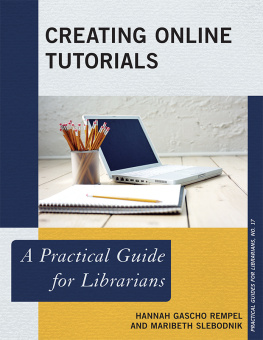
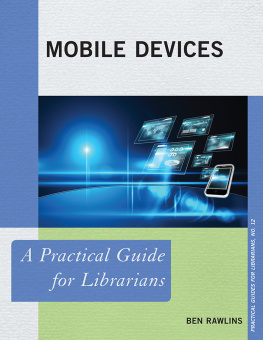
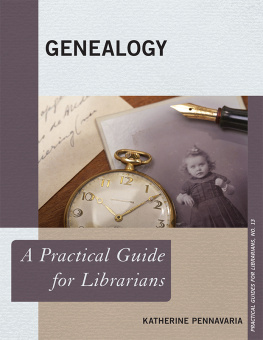


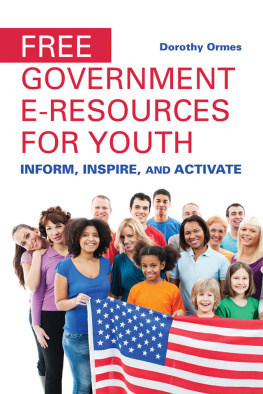

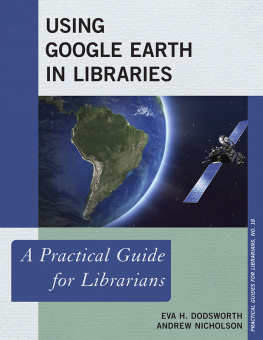
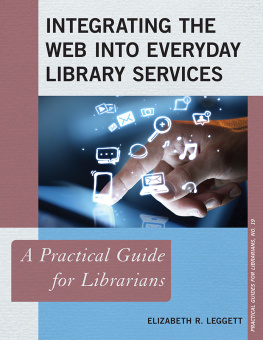
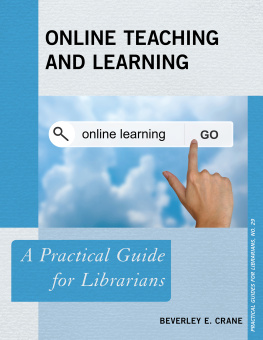
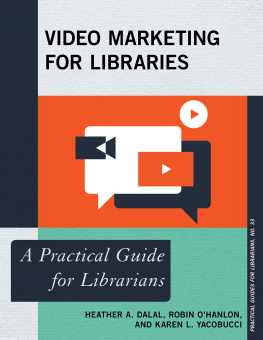
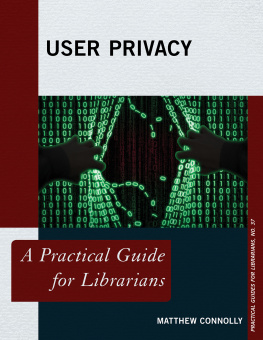
 About the Series
About the Series The paper used in this publication meets the minimum requirements of American National Standard for Information SciencesPermanence of Paper for Printed Library Materials, ANSI/NISO Z39.48-1992.
The paper used in this publication meets the minimum requirements of American National Standard for Information SciencesPermanence of Paper for Printed Library Materials, ANSI/NISO Z39.48-1992. Why Do You Need to Read a Book on How to Create Tutorials?
Why Do You Need to Read a Book on How to Create Tutorials?